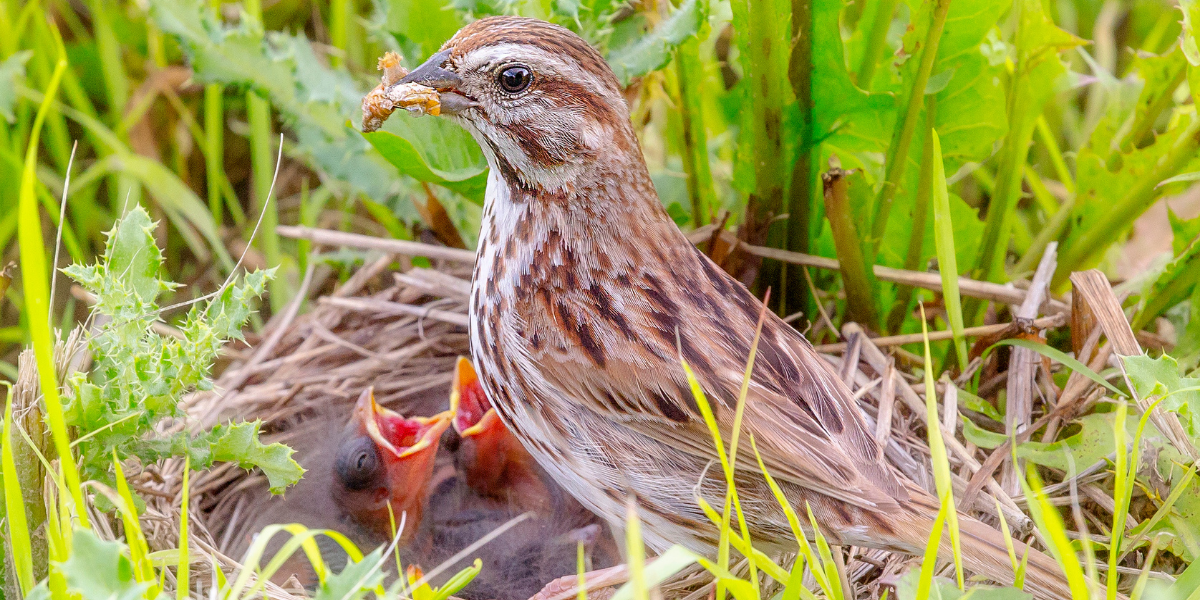June Calendar of Wildlife & Habitat Happenings

June Calendar
Opportunities to experience natural North Carolina are as diverse as our state’s spectacular landscape. And there’s no shortage of things to do, see and hear this month – from emerging Japanese beetles to flying rosy maple moths to blooming venus flytraps. It’s also Great Outdoors Month and National Pollinators Month. Take a look at the June calendar below and explore NCWF’s upcoming events.
June 1: Venus flytraps are in bloom in the southeastern Coastal Plain.
June 2: Galax is in bloom in the Mountains and western Piedmont.
June 3: Flame azalea, columbine and fire pink are in bloom in the Mountains.
June 4: Delayed harvest trout waters open. National Trails Day. National Fishing and Boating Week (4-12). Peak flight period for Belle’s Sanddragon —one of our rarer dragonflies—so far, known only from a few of the large Carolina bay lakes in Bladen County.
June 4: National Black Bear Day. Black bears and their habitat exemplify our state’s magnificent wild lives and wild places and why we’re proud to support the N.C. Black Bear Festival in Plymouth, June 3-5.
June 5: World Environment Day.
June 5-11: National Gardening Week.
June 6: National Gardening Exercise Day. Great-spangled fritillaries are flying. Sampson’s snakeroot is blooming
June 7: Grass pink orchid and orange milkwort are in bloom in Coastal Plain savannas.
June 8: Rosy maple moths are flying. World Ocean Day.
June 11: National Get Outdoors Day. Peak flight period for King’s hairstreak, an uncommon butterfly found mostly in our Sandhills and southern Coastal Plain.
June 12: Japanese beetles are emerging.
June 13: Bluehead chubs are spawning. The large stone nests constructed by these abundant, stream-dwelling minnows are used by several other minnow species.
June 13: National Weed Your Garden Day (just the invasive ones!)
June 14: Rosinweed is in bloom. Ten-lined June beetles are flying.
June 15: Spotted salamander larvae are transforming; juveniles disperse into terrestrial habitats on rainy nights.
June 15: Nature Photography Day. The perfect day to head outdoors and get snapping for our annual wildlife photo contest. Learn more and enter.
June 16: Gray’s lilies are in bloom in the Mountains. Carolina gopher frog tadpoles and tiger salamander larvae are transforming in the Sandhills and Coastal Plain.
June 17: Five-lined, southeastern five-lined and broadhead skinks are nesting. Unlike most reptiles, these lizards remain with their eggs, guarding them until they hatch.
June 18: Io moths are flying. National Go Fishing Day.
June 19: Peak bloom for rhododendron and mountain laurel in the Mountains. Good places to admire this floral show include Roan Mountain in Mitchell County and Craggy Gardens on the Blue Ridge Parkway in Buncombe County.
June 20-26: National Pollinator Week.
June 22: Sourwood is in bloom.
June 23: Sandhills thistle, Appalachian mountain mint and Nash’s meadow-beauty are in bloom. Eastern box turtle nesting peaks.
June 24: Spurred butterfly pea, sticky false foxglove and sandhill dayflower are blooming. Lark sparrows are nesting. These ground-nesting sparrows are rare and occasional breeders in our state; most breeding records are from military drop zones and other large, grassy areas in the Sandhills.
June 25: National Catfish Day – North Carolina has nearly 20 species to celebrate. Redlip shiners and mountain redbelly dace are spawning in mountain streams. Eastern milkpea is in bloom. Loggerhead shrikes are fledging.
June 25: Fungus Among Us: Wild Mushroom Identification Walk. Learn the basics of foraging wild mushrooms. Event part of NCWF’s Walks on the Wild Side series.
June 26: National Canoe Day—get a canoe onto your favorite stream, lake or pond if you can. Wild quinine and daisy fleabane are blooming.
June 27: Green June beetles begin to emerge especially following a rain that softens the soil so the adults can dig their way to the surface. National Wildlife Federation’s Great American Backyard Campout. Take a kid (or adult) camping!
June 28: Northern pine snakes are nesting. These uncommon snakes, found mostly in our Sandhills region, are unique in that females typically spend several days digging a long tunnel ending in a nest chamber, where they deposit their small clutch of large eggs (the largest eggs of any of our snakes). Their nest chambers are sometimes used as refugia by other animals.
June 29: Green salamanders are nesting in our southern Mountains. These fully terrestrial salamanders attach their eggs to the ceilings of narrow rock crevices, attending them until they hatch.
June 30: Loggerhead sea turtle nesting peaks. American kestrels are fledging.
Explore NCWF events calendar.

